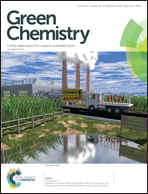Ionic liquids for the preparation of biopolymer materials for drug/gene delivery: a review
Abstract
Biopolymers are particularly suitable for drug applications due to their biocompatibility, biodegradability, and low immunogenicity. There has been growing interest in using biopolymers to achieve the controlled release of therapeutics. However, the solubility and processability of biopolymers remain challenging due to their structural heterogeneity and dense networks of inter- and intramolecular interactions. Fortunately, ionic liquids (ILs), regarded as green solvents, have been increasingly appreciated for their unparalleled power for biopolymer processing. By the dissolution of biopolymers in ILs, various materials including sponges, films, microparticles (MPs), nanoparticles (NPs), and aerogels can be generated as potential drug delivery carriers. Besides, ILs can be used as reaction media and/or catalysts for biopolymer chemical reactions, which show enhanced reaction efficiencies. In addition, because of their unique physicochemical (e.g., polarity, hydrophobicity, amphipathicity and miscibility) and biological properties (e.g., antibacterial activity), ILs can assist or participate in the formation of drug delivery carriers. To cover all these aspects of the research, this review provides an overview of the recent progress in using ILs for the engineering of next-generation drug/gene delivery carrier materials. The tunable properties of ILs as affected by their structures are highlighted. Also, the key principles, challenges and prospects of this area are presented.



 Please wait while we load your content...
Please wait while we load your content...